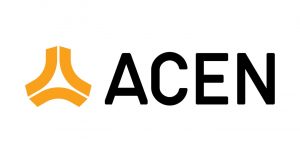Targeting the youth market

The government over the years has been raising the excise tax on cigarettes for two reasons: to reduce cigarette consumption; and, to earn more revenues. Theoretically, a tobacco tax is a tax on smoking’s “negative externalities”: smoking-related health problems such as lung cancer, heart disease, and respiratory diseases that raise healthcare costs and lower labor productivity.
While it can be argued that a high tax is anti-poor, and that by now cigarettes are probably over-taxed (with tax revenues exceeding related public healthcare costs), it appears to have done its work in cutting Philippine cigarette consumption. One study indicates that smoking prevalence fell from 34% in 2000 to 24.5% in 2015, and is seen to fall further to 20% by 2025.
These numbers, however, cover only tobacco smoking, and exclude alternatives such as e-cigarettes (also known as vape, which uses an electronic atomizer fed with flavored liquid), snus (tobacco product that is a variant of dry snuff), and heated tobacco products (where tobacco is heated and not burned).
The concern moving forward, however, is that non-tax initiatives aiming to reduce smoking (including tobacco alternatives) now appear to be lagging. While the tobacco tax is doing its part, and while smoking has been banned in many public places, other measures intended to further reduce smoking prevalence are requiring more attention.
In a press statement, the Institute for Global Tobacco Control (IGTC) said that its recent observational study found “that tobacco and nicotine product sale and advertising persist within proximity of schools in the Philippines, despite regulations prohibiting sales, displays, advertisements, and promotions of tobacco products within 100 meters.”
IGTC was formed in 1998 as part of the Department of Health, Behavior and Society at the Johns Hopkins Bloomberg School of Public Health in Baltimore, Maryland. IGTC is a partner in the Bloomberg Initiative to Reduce Tobacco Use and a Collaborating Center of the World Health Organization. Its mission is to prevent death and disease from tobacco products by generating evidence to support tobacco interventions.
In December 2022 to January 2023, IGTC monitored the local sale and marketing of cigarettes, e-cigarettes, and heated tobacco products (HTP) at over 6,000 retailers within 200 meters of 353 schools nine cities and regions. And it found that “2,070 cigarette, 43 e-cigarette, and 33 HTP retail locations were observed within 100 meters of the majority of schools,” in violation of Philippine law.
“The proximity of tobacco and nicotine product stores, shops, street vendors, and kiosks to schools contribute to the wide availability of these products and leave Filipino youth exposed to tobacco marketing strategies,” IGTC said. It thus noted the need for stricter enforcement of existing regulations against tobacco advertising, promotion, and sponsorship, particularly those that target the young at “points of sale.”
IGTC noted these “are common tobacco industry tactics that can lead to youth tobacco initiation and reinforce use among those who currently use these products. Young people and adolescents can be particularly susceptible to the influential effects of point-of-sale marketing such as strategically located product displays, sales of single stick cigarettes (which make cigarettes more affordable), and prominent advertising — including at children’s eye level.”
During its observational study in the Philippines, IGTC found that even with regulation requiring signage indicating that sales are prohibited to those under 21 years of age, “only 11% of cigarette retailers, 4% of e-cigarette retailers, and 48% of HTP retailers had the requisite signage visible; 98% of cigarette retailers sold single stick cigarettes; and, indoor and outdoor advertising (e.g., graphic printed signage/posters) were common across all retailer types.”
In addition, “flavored tobacco and nicotine products were also commonly available across retailers, including 90% of cigarette retailers and 98% of e-cigarette and HTP retailers. Flavors can expand product appeal by masking the harsh taste of tobacco. Flavored products are also linked to increased product appeal and initiation among young people,” IGTC said.
It is in this line that IGTC is calling for “stricter enforcement of existing policies prohibiting sales and advertising of tobacco products within 100 meters of schools and implementation of a national comprehensive policy on tobacco advertising, promotion, and sponsorship.” It added that “a comprehensive ban on tobacco advertising, promotion, and sponsorship is one of the most cost-effective and high-impact ways that countries can reduce demand for tobacco.”
Unlike regular cigarettes, e-cigarettes are small devices that are easy to hide. They make use of small pods filled with flavored liquid. A vape kit can cost around P500, and a pack of three pods about P375. These pods can be bought in vape shops or even online. On the other hand, a flip-top box of cigarettes can cost as much as P1,800 per ream, or P190 per pack. It is no wonder that younger “smokers” are opting for vape or e-cigarettes.
Obviously, despite the excise tax on tobacco and e-cigarettes, vape kits remain relatively affordable compared to regular cigarettes. Moreover, they are offered in various “flavors.” And, they do not require heating or burning to be consumed or enjoyed. It is thus unsurprising that cigarette smoking is declining and vaping is attracting the youth.
And this is where the strict and effective enforcement of regulations on advertising, promotion, and sale becomes crucial. It is obvious that a high excise tax is not enough. Access to tobacco products and alternatives should be further limited, and promotion, advertising, and sales should be effectively monitored to prevent access particularly by the young.
The government can work on this by first reviewing the IGTC study and then tapping local governments. Local officials issue business permits and enforce zoning restrictions. If tobacco products should not be sold near schools, then local officials should be held jointly liable with licensed retailers for any violation of the law. But, if erring retailers are penalized with fines, then local governments should collect the penalties as well.
It is only in working with local governments and empowering them that the National Government can expect some degree of success in the campaign against under-age smoking. Even with additional policies and regulations against tobacco sale and marketing, unless restrictions are strictly enforced at the “street” level, the young will always find ways to beat the system.
Marvin Tort is a former managing editor of BusinessWorld, and a former chairman of the Philippine Press Council




